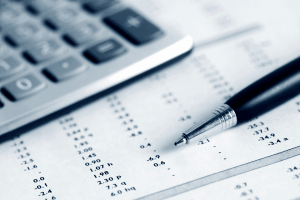
Laura purchased a piece of machinery for her small manufacturing plant in 2017 at a cost of $20,000. When using other methods of accounting, like fair market value, cost verifications can be harder to provide. If you’re trying to prove the value of an item or a cost using fair market value, substantial work is involved. This can include current value for similar items, inspection on the wear and tear, and a professional appreciation. In the world of accounting, costs need to be verified so that books can be balanced. When using the cost principle, costs are verified by their entries on the books.
Investments that will be converted to cash in the near future are shown on your balance sheet at their market value, rather than their historical cost. Lisa’s company purchased a piece of equipment the cost principle is used: for the kitchen in 2018 for $15,000. The cost on the balance sheet remains at the original price of $15,000. Some of the most valuable assets to a growing business are intangible.
Should you be using the cost principle?
In Introduction to Financial Statements, we addressed the owner’s value in the firm as capital or owner’s equity. The primary reason for this distinction is that the typical company can have several to thousands of owners, and the financial statements for corporations require a greater amount of complexity. For example, Lynn Sanders purchases two cars; one is used for personal use only, and the other is used for business use only. According to the separate entity concept, Lynn may record the purchase of the car used by the company in the company’s accounting records, but not the car for personal use. Some companies that operate on a global scale may be able to report their financial statements using IFRS. The SEC regulates the financial reporting of companies selling their shares in the United States, whether US GAAP or IFRS are used.

But whatever process you’re using to record your assets, the cost principle can help maintain consistent balance sheet reporting. GAAP, or the generally accepted accounting principles, consists of 10 different principles. Being able to determine the value of an asset objectively is a consistent accounting method. It is also the easiest way to determine an asset’s value, making it widely accepted among accountants. Appreciation of an asset occurs when the value of the asset increases. When reviewing the worth of assets, appreciation is treated as a gain.
Asset Depreciation
In carrying out these steps, the timing and rate at which transactions are recorded and subsequently reported in the financial statements are determined by the accepted accounting principles used by the company. The cost principle is one of the basic financial reporting principles recommended by US GAAP. It requires that certain assets be reported at historical cost, the original price paid at the time of purchase, in the financial record. The Cost Principle, as a fundamental concept in accounting, plays a crucial role in financial reporting by requiring assets to be recorded at their original cost. It provides a reliable and objective basis for valuing assets and ensures consistency in financial statements.
- These extra expenses are capitalized and then depreciated over the asset’s useful life.
- This means that when you purchase assets, they are recorded at the same cost from period to period.
- The procedural part of accounting—recording transactions right through to creating financial statements—is a universal process.
- Asset impairment indicates that an asset’s fair market value has dropped below what it was originally listed as.
- The realizable balance is the balance expected once the accounts are paid on.
- The cost of plant assets in the financial record must be in line with Generally Accepted Accounting Principles (GAAP).
When expenses are capitalized, they are depreciated along with the asset. Revenue expenditures are general expenses that don’t get capitalized. The intrinsic assumption is that the benefit of the purchase will be used up during the accounting period in which the purchase was incurred.

